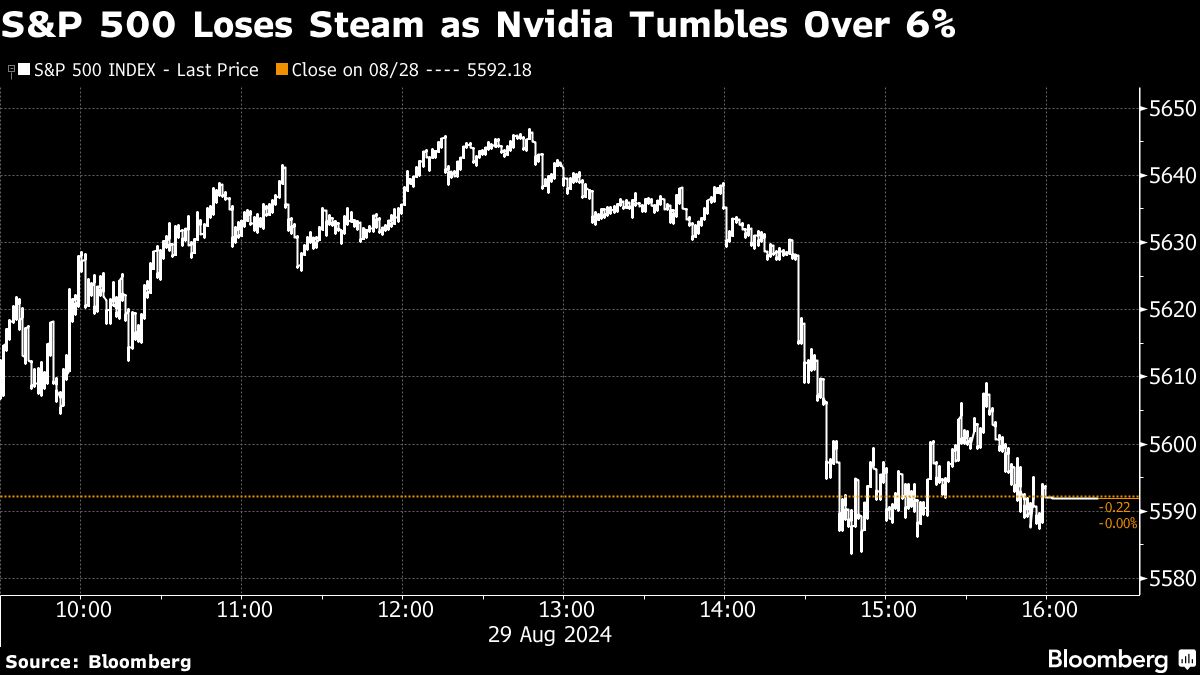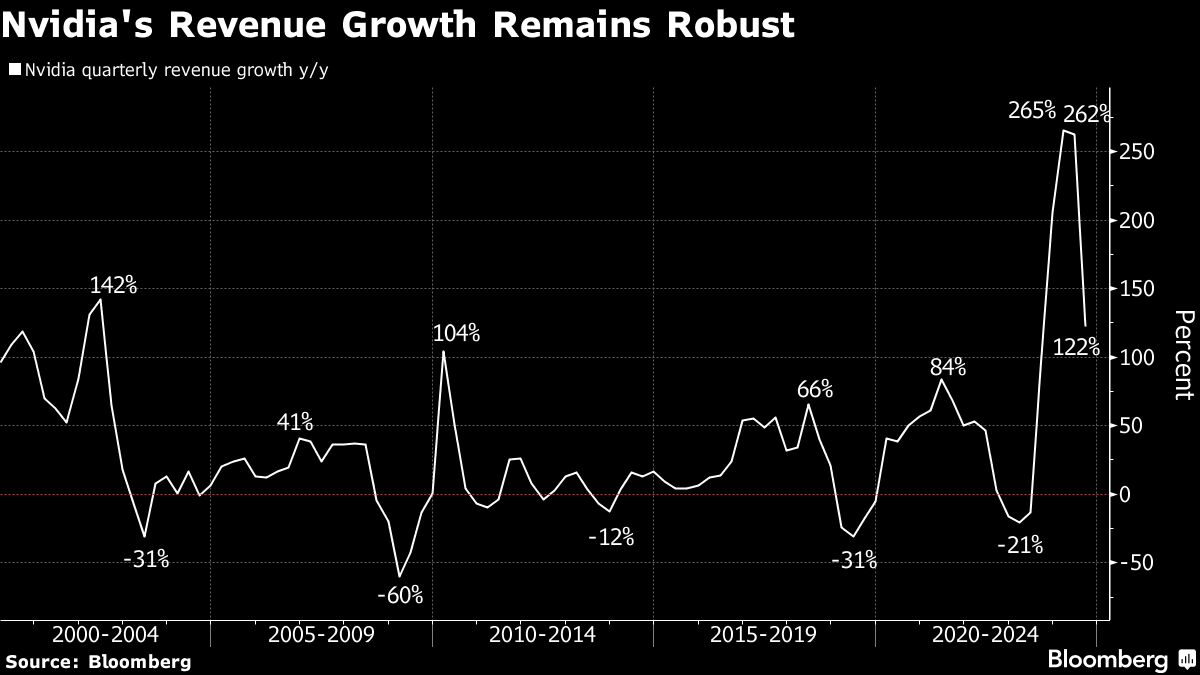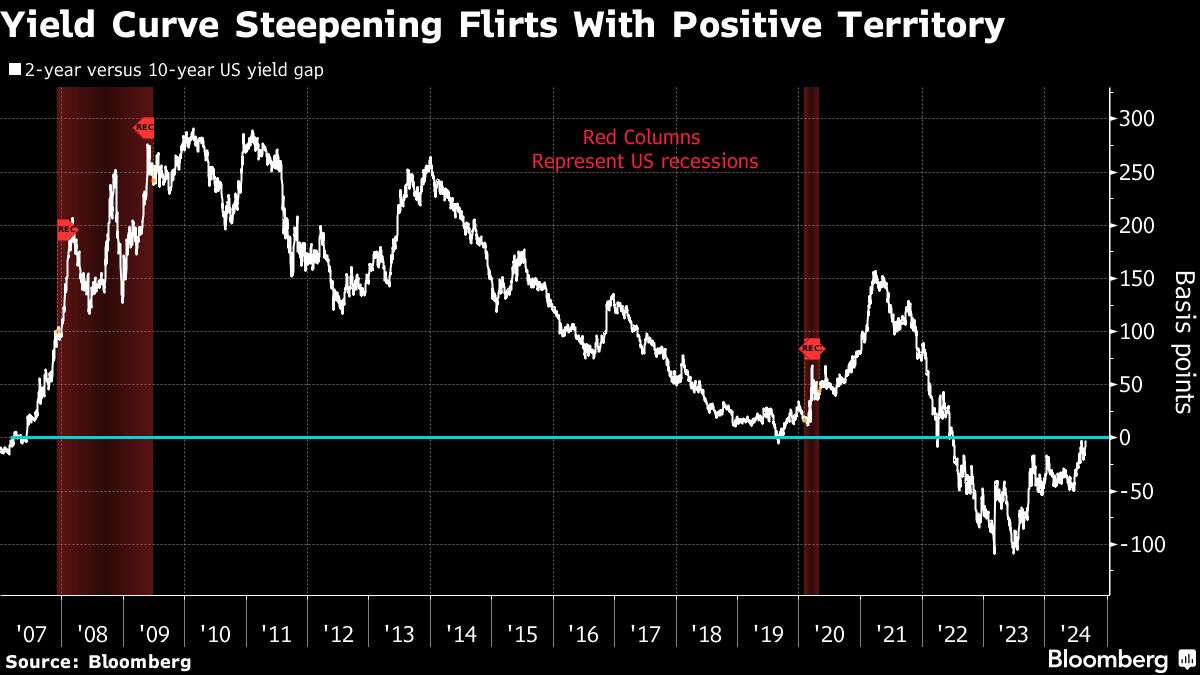
(Aug 30): A rally in the S&P 500 lost traction as Nvidia Corp extended its selloff to more than 6%. The good news: most stocks in the US advanced.
Buoyed by data showing the economy is holding up and a host of market observers reassuring investors that Nvidia’s growth prospects remain intact, the vast majority of groups in the American equity benchmark rose. While tech was dragged down by the chipmaker, five companies in the “Magnificent Seven” group of megacaps gained. The Dow Jones Industrial Average closed at an all-time high. The Russell 2000 of small firms climbed. In late hours, Dell Technologies Inc jumped after its results.
“As long as the tech sector can avoid getting hit hard, it could/should keep the ‘rotation’ scenario in play,” said Matt Maley at Miller Tabak + Co. “Since the big-cap tech names are so highly weighted in the indices, a significant decline for the group will cause the market to move lower. But, as long as they can hold up, it could allow for the recent ‘rotation’ move to continue — and help the stock market move higher over the coming weeks.”
To Steve Sosnick at Interactive Brokers, some investors might be questioning: if Nvidia is down so much, how would that be a relief for markets? After all, the S&P 500 came within a whisker of an all-time high earlier on Thursday.
“Although the company didn’t meet the most optimistic ‘whisper numbers,’ they also didn’t say anything that would invalidate investors’ love for megacap tech and all things regarding artificial intelligence (AI),” he noted.
The S&P 500 hovered near 5,590. Treasuries held losses after a US$44 billion (RM189.85 billion) sale of seven-year notes was a bit soft. The yield on 10-year bonds advanced three basis points to 3.86%. Swap traders slightly trimmed bets on Fed easing, while still expecting around 100 basis points of cuts for 2024. The dollar rose. Brent oil jumped to around US$80.
Nvidia’s earnings report needed to be perfect for a stock that’s added nearly US$2 trillion in market value in the past year. In the end, a broad beat still sparked a selloff.
“The slide in Nvidia shares after the release of its latest consensus-beating results bolsters the argument that it was priced for perfection,” said John Higgins at Capital Economics. “But that doesn’t mean its party is over, or that the AI bubble is bursting.”
To James Demmert at Main Street Research, Nvidia’s post-earnings pullback was largely driven by investor confusion and a fear that Nvidia’s stock has run too fast since the early August low, but the strength in Nvidia’s quarter showed that its valuation is justified.
“The pullback in Nvidia’s stock is an invitation for investors to buy the stock,” he said.
In the bond market, the rise in yields left a closely watched spread just shy of regaining a normal, positive slope.
The margin by which US two-year yields exceed 10-year yields dwindled to around three basis points. A year ago the two-year was around 80 basis points higher than the 10-year, reflecting expectations that Fed rate hikes above 5% would tame inflation and possibly cause a recession.
The US economy grew at a slightly stronger pace in the second quarter than initially reported, reflecting an upward revision to consumer spending that more than offset weaker activity in other categories.
“The message of this morning’s data is ‘steady as she goes’,” said Chris Larkin at E*Trade from Morgan Stanley. “The economy doesn’t appear to be falling off a cliff, and in the current market, good news is good. There was nothing here to make the Fed rethink its plan to cut rates next month.”
Those figures gained even more importance in the run-up to the Fed’s preferred inflation gauge. The report is expected to show the core personal consumption expenditures price index is successfully approaching the central bank’s 2% goal.
Uploaded by Isabelle Francis



